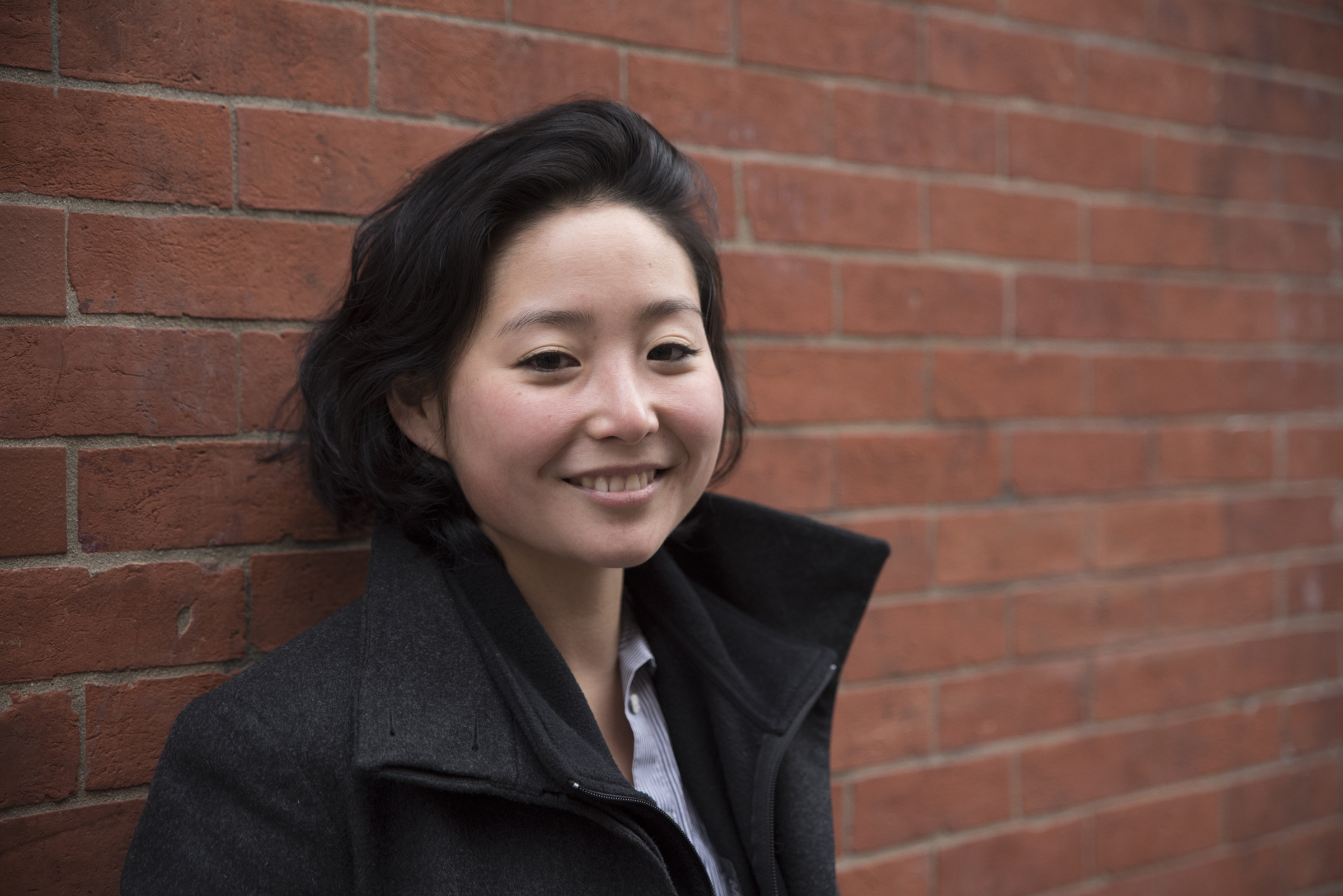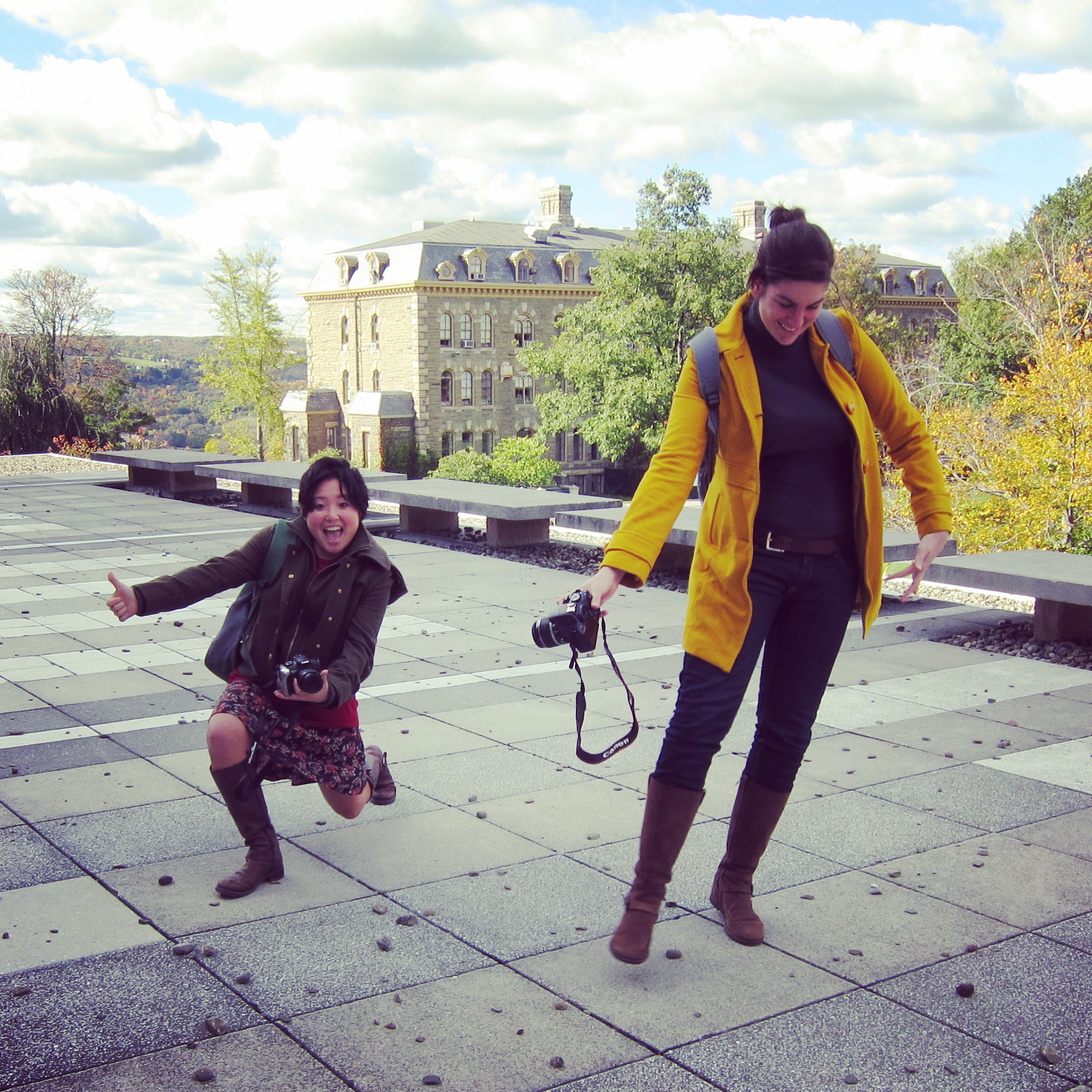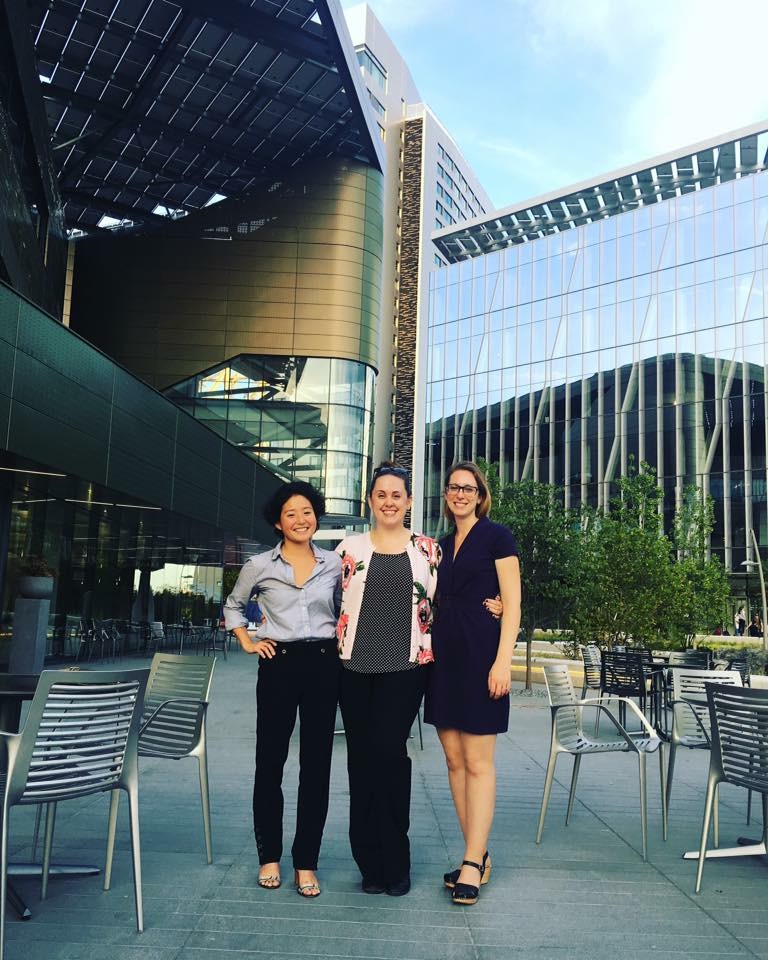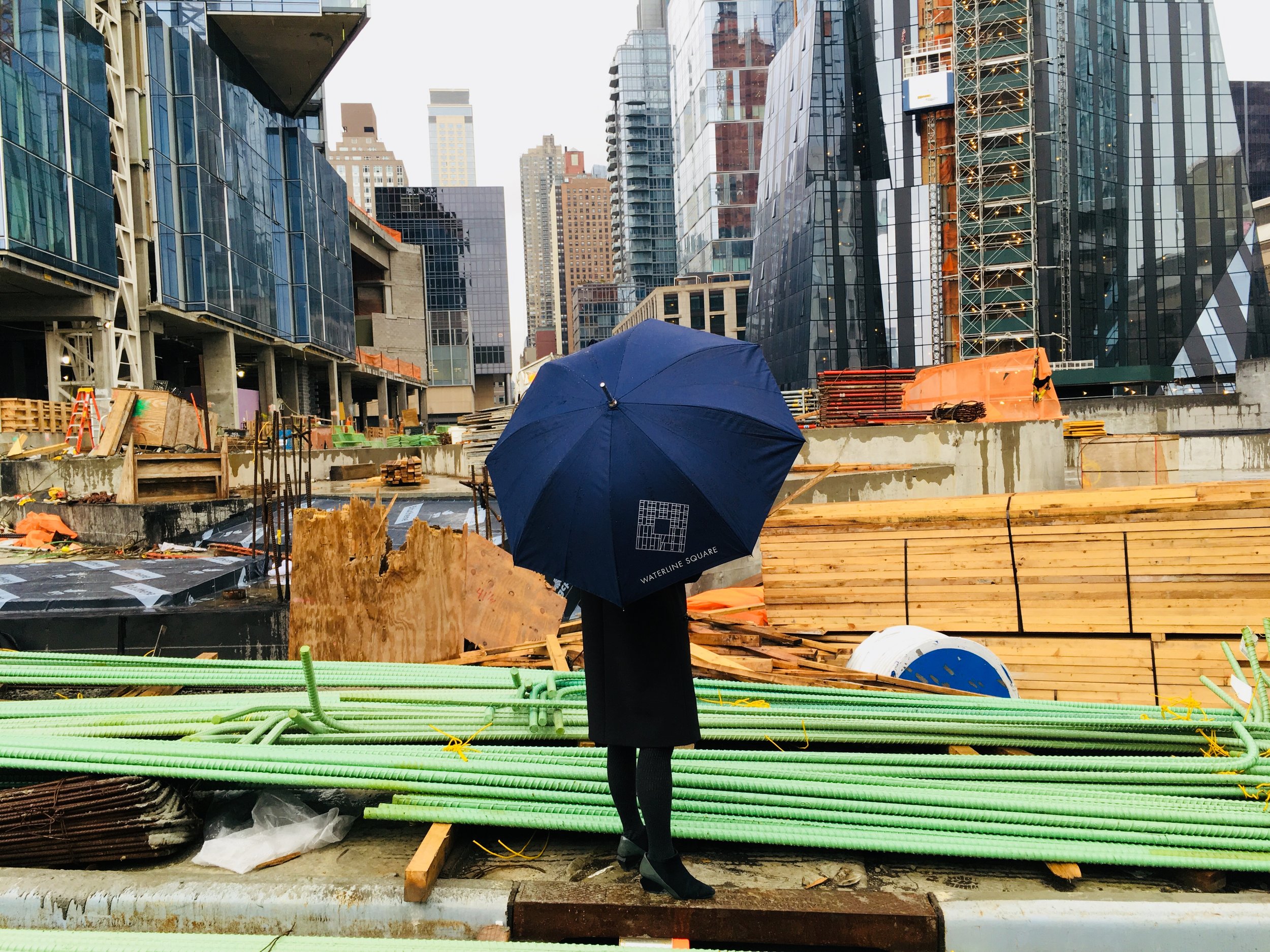Building Blocks and Leaps of Faith: Jin Yi on Synthesizing Her Skills
by Julia Gamolina, cover image by Yuriy Chernets Photography Having earned her Bachelor of Science in Mechanical Engineering and her Master in Architecture, both from Cornell University, Youngjin (Jin) Yi is now an Associate in Design and Construction at General Investment and Development (GID). Jin has previously worked as a Mechanical Engineer at Buro Happold, and has held internships at DIGroup Architecture, and the Port Authority of NY & NJ. She has also been a teaching assistant for courses ranging from Introduction to Fluid Mechanics, to Freehand Drawing and Structural Concepts. In her conversation with Julia Gamolina, Jin describes the lessons learned from her varied experiences, encouraging young architects to learn as much as they can from each moment, and to fight to combine all of their skills, interests and ambitions in their work.
JG: How did your interest in architecture and engineering first develop?
JY: Engineering found me first. Growing up, I was always interested in and had a natural inclination towards math and science, though I also loved literature and history. When the time came to apply to college, I was interested in a few things, architecture being one of them. I looked at programs that allowed for flexibility, a lot of them engineering, but I also applied to an array of liberal arts schools with architecture courses. The engineering programs seemed to like me more [laughs], so I kind of let the decision be made for me. I didn’t feel comfortable choosing something for the rest of my life and tried to keep my options as open as possible, and engineering allowed that at the time.
When was it then cemented that you did, in fact, want to pursue architecture?
Making sure to spend time on my other interests, I spent a lot of time in college taking elective courses in art history and architecture, and then ended up taking a summer design studio. Two years into engineering, I finally decided that I had to give myself the opportunity to explore architecture, so as soon as I graduated, I went for my M.Arch.
You’ve had a variety of professional experiences early on - did you consciously plan to combine your background in both engineering and architecture?
I did - while in architecture school, I purposefully chose a very different type of internship each summer to see the full spectrum of professions within the built environment. I first worked in a small architecture office focusing on interior work, then in construction at the Port Authority, and lastly in mechanical engineering at Buro Happold. After internships in all those different places, I felt that I was most suited for an interdisciplinary design environment, so coming out of architecture school I wanted to find a full-services company that could provide this hybrid experience, so I went back to Buro Happold.
A step back for a moment - how did you end up working with the Port Authority and what was it like?
I applied for an architecture internship with the Port Authority, and after we talked about my past experiences in both architecture and engineering in my interview, they realized they had a job available in engineering and construction at the World Trade Center site. The experience ended up being really productive; I worked under a project manager that was coordinating the site-wide radio information systems. Working with such an immaterial system was fascinating and I learned a different way of thinking – radio information systems are not tangible, so there was a lot of strategic and conceptual diagramming. I was also on site a lot and it’s still the largest construction site I’ve ever been in.
At Buro Happold, how did it feel to be on the consultant side of architectural projects?
At first it was a little bit of a struggle; coming straight from architecture school, I was used to having a lot of influence over the bigger design picture. Then I realized that working as an MEP engineer wasn’t any less creative; I felt as if I had gotten a studio design prompt, just with ten more sub-parameters to manage [laughs]. One good thing about coming straight from architecture is that I was a lot more empathetic to the coordination that was happening on the architects’ side.
At Buro Happold you worked on the Highline Section III Phase. What was this like?
Buro Happold had been involved in MEP and structural work on working on all the sections of the Highline previously, so I was lucky to inherit all that knowledge. I learned so much from the project just because it’s such a unique and special intervention - everything we did was so custom. We dealt with all major utility companies because of all the street work going on - everything was exposed, and we needed to figure out how to elegantly conceal things and make them durable and waterproof. Section III was a great creative challenge, but also made me realize all of the things I had been missing.
Why did you decide to leave Buro Happold and join GID?
At Buro Happold, I was very focused on all the detailing that goes into mechanical and plumbing engineering. The good thing about working as a consultant is that you get to work on a large range of projects, so I had a lot of different experiences in the field and a lot of experience drawing through many types of buildings. After three years there however, I missed owning a project from start to finish. A consulting engineer is often brought on a little later into the design development of a project, and I was also yearning to be involved in the early parts of the design process.
I was considering applying to architecture jobs, and through a series of very fortunate events I had a mentor reach out to me for a job in development. At GID, I am involved in project management and quality assurance to ensure the design intent is properly executed. I review all of the architecture and interior drawings, potential budgeting issues, and coordination. This experience was exactly what I didn’t yet have in terms of collecting all of my architectural knowledge cards, filling an incredible void that I felt I had in my experience at the time since as an engineer, I was not always able to see projects through and understand them from a larger picture.
What are your take-aways from working in architecture, engineering, construction, and development?
I’ve seen all of those opportunities as chances to learn. Each job has focused on different levels of detail; at Buro Happold I was able to get into everything nitty gritty, at now in the position of a developer I am thinking a lot about the overall scope of the project. They’re actually all similar problems, just at different scales, and everything is informed by all of the other details that come into play. The process for me has been that each step and each job I take is a building block that builds on the last.
What have been some highlights?
A great project I worked on with Buro Happold is the Cornell Residential Tower at the Tech Campus on Roosevelt Island. The tower was a passive house project, one of the first that New York City has pursued, so it was a very special project to work on. Often you’re deep into a project, and don’t have a minute to step back to see what you’re doing or to see how special it is. When I took a step back on this one with my project manager after it topped out, I realized what a playground for architecture New York is, and remembering that was a really nice moment for me.
What have been the challenges?
A continuous challenge for me is feeling indecisive about choosing one direction over another. One of my largest frustrations coming out of high school was that I felt pressured to choose one path, and I feared that by doing so, I wouldn’t be able to fulfill one half of my personality and interests. Thankfully I had a really incredible mentor in high school, my art history teacher - he reminded me that a career is long, and that I had time to do all of the things that I wanted to. He was also the person who gave me the courage to finally apply to architecture school.
Finding a position that synthesizes all of me has also been a struggle, and I’m still working on finding the balance between knowing how to resolve details on a project and becoming a specialist, to wanting to fulfill my own goals and try to be a synthesizer and generalist. It’s a juggling act, but I’ve learned that there’s huge value in understanding how things come together both at the high and at the detail level of a project.
What has been your general approach to your career?
A lot of my decisions have been based on paying attention to when I’m thinking a lot about something, or yearning for something that I can’t quite get in my current position. I never strategically preplanned a path, but always made a judgement call when I wanted to learn something new. When I learn something at a job, it brings up ten or twenty other things I wish I knew, and then once the box of the things I wish I knew fills up or overflows, it means it’s time to find the next place where I can learn them.
Looking back, what are you most proud of?
Making the decision to go to graduate school for architecture is a step I’m most proud of. Up until that point, I had been really passive about my life. I mentioned earlier that engineering “chose” me, so making the decision to go to architecture school was the first deliberate, conscious decision that I made that had been formulating for so many years through all my varied interests, after reading and drawing and deliberating a lot. I’m also proud of the variety of experiences that I’ve gathered – the path has been a little bit lonely in figuring out how to make all the different parts of me work together, because I don’t see a lot of precedents, but I’m managing to find synergy between all the things that make me, me.
Part of the reason I felt comfortable doing a mixed bag of things is my dad – he has never had a perfectly linear career. He was an astrophysicist, a businessman, and a high school teacher, and has broken every convention of staying in one profession. He embraced learning at every level and at every place, which is the most important thing. Learning to let go of a label or a name tag was another big achievement for me - I owe it to my supportive family that has always encouraged my pursuits, no matter how non-linear those pursuits might be.
What are the biggest lessons you’ve learned?
In engineering, the biggest lesson was that people are not measured by how few mistakes they make or how smooth everything goes, but by the attitude they take and how they choose to solve a problem or resolve an issue. A lot of success is measured by your ability to overcome small obstacles and be creative with it. The second thing is about attitude – everything is an opportunity to learn something, and even if it’s not necessarily exactly your dream job, so focus on gathering as much knowledge and experience as you can from the moment you are in. The exact group of people working together to design and build a project will also likely never work all together again on another project, so be sure to cherish the collaborations and the friendships you create in those moments.
What advice would you give to young architects?
When you have a hard time finding the right niche for you, don’t see it as a bad thing – it just means there’s something else to try in the future. It may feel really stressful to try and package together all your different skills, interests, and goals – you just have to ask yourself, if you set aside the fear, what do you need to do to get to where you want. Also, no one will ever tell you if you’re “right on track” because there is no prescribed track in the professional world! It can be hard to be flexible, and really nerve racking to not know what’s next, but there is so much value in taking leaps of faith in the accumulated tangential interests and connections that you might have. It’s never too late to start.
[author] [author_image timthumb='on']http://architexx.org/wp-content/uploads/2018/01/MA.jpg[/author_image] [author_info] With experience in design, business development, PR, and marketing, Julia Gamolina is focused on communicating identity in the built environment. She is a regular contributor to sub_texxt, interviewing women in architecture on their career development. She is also on the Young Leader's Group committee for the Urban Land Institute (ULI), and is a Founding Member of the Wing. Julia received her Bachelor of Architecture at Cornell University, graduating with the Charles Goodwin Sands Memorial Medal for exceptional merit in the thesis of architecture.[/author_info] [/author]








